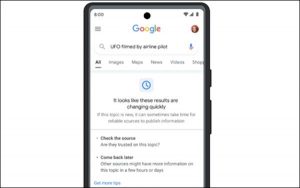The veteran streaming platform has been forced to pivot to ads to make up a shortfall in subscription revenue. Here’s how it got here.
Ah, Netflix.
What was once everyone’s favorite (and only) streaming provider is now playing catch-up in the advertising-based video on demand (AVOD) game. Sparked by a 200K subscriber loss in Q1, Netflix rather reluctantly announced they will likely enter the AVOD ecosystem. Many well-tenured executives in the TV and Streaming space saw this coming from a mile away, and Netflix is taking a bit of a beating in the upfronts, trades, and boardrooms.
But in TV, as elsewhere around the world, with a persistent pandemic, supply-chain issues, war, and social unrest, the temptation to pick away at competitors is wrong-minded. It’s even more important to bind together, support one another, and celebrate the competition that has fostered the innovation in our industry.
On that note, before we shove Netflix into the also-ran camp and focus on other platforms with built-out AVOD options, let’s revisit one of the OG streaming platforms, how they got here, and how they can move forward.
How Netflix got here
Netflix was born in 1997. You may remember the CDs of movies and documentaries you ordered which later evolved into a subscription model. Ten years after its birth, Netflix offered titles available for streaming over the internet – which was, at the time, a novel concept. Through their recommendation engine and seeing the potential to differentiate from cable by offering another way to access premium TV, Netflix had created a new game. Netflix enjoyed years of first-to-market success and kept working to bring us original content that turned into cult favorites such as “House of Cards,” “Stranger Things,” and my personal favorite, “The Queen’s Gambit.”
Netflix changed the way movies and shows were distributed and consumed and pushed networks to create and obtain better and stickier content, and more premium content to differentiate themselves and lure in loyal consumers. They turned entertainment upside-down.
What’s more, they challenged the TV measurement norms from the get-go, snubbing their nose at Nielsen and looking more at quantity and efficiency of content consumed. So yes, Netflix is behind in the AVOD game. And they didn’t pivot as quickly as they needed to.
Where Netflix stands now
So where does Netflix stand now? Let’s first talk a bit about AVOD which has been growing in prevalence and scope over the past few years. Specifically AVOD spend will be $ 22 billion in 2022, according to MoffettNathanson Research. What was once a “maybe” for platforms has shifted to a must. So essentially AVOD and SVOD (Subscription Video on Demand) are merging together.
There are many reasons platforms have AVOD options – but the main being the ability to provide a more affordable tier of service to consumers who want to watch the platform, but don’t want to pay the premium for an ad-less experience. The primary use of AVOD tiers is to retain and acquire new customers. Currently, AVOD is being put to the test and held to a higher bar as premium platforms such as Disney+ join the game. Disney+ has pledged their ad experience will be low – four ads per hour, which is aligned with another premiere player, HBO Max’s frequency.
Other platforms such as the original AVOD darling Hulu are nearly 2x that load. Platforms will be tested and forced to think harder about balancing the consumer experience with brand opportunity. How Netflix handles ad load and overall experience could speak to its future in the space.
However, for now, let’s take this time to appreciate what Netflix has done for the industry and hope that next year they join the upfronts with more content, sustained growth and that gumption they brought to the market in 2007, frequency controlled that is.
The post Netflix is playing catch-up in the AVOD game appeared first on MarTech.
MarTech(23)







